Surviving in a desert’s harsh expanse demands a unique set of skills and knowledge. Among the most critical is the ability to locate water sources, as dehydration can swiftly become a life-threatening challenge. As a prepper, understanding how to find water in the desert is not only a skill to master but a fundamental necessity.
To find water in the desert, search for signs of vegetation, look for dry riverbeds or low-lying areas, dig a hole in a shaded spot, and follow animal tracks. These methods often lead to water sources.
In this guide, we delve into the essential techniques and strategies that every prepper should be equipped with – to find water when lost or stranded in the desert.
Preparation is Key
You wouldn’t want to end up as dehydrated as a raisin, so make sure you’re prepared before venturing into the desert.
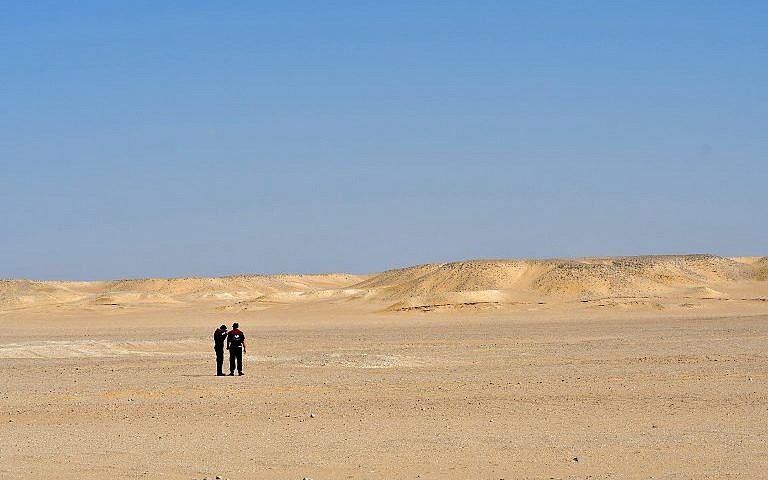
Here are some essential tips for preparing yourself:
First, gather all the necessary gear before heading out. A sturdy backpack, lightweight clothing that covers your body, and a wide-brimmed hat are crucial to protect yourself from the scorching sun. Carry enough water bottles or hydration packs to sustain you throughout your journey.
Secondly, familiarize yourself with navigation techniques. Bring a reliable compass and map of the area you’ll be exploring. Learn how to use these tools effectively before setting foot in the desert.
Next, develop essential survival skills such as finding shelter and identifying edible plants or animals. Knowing how to start a fire and purify water is also critical in emergencies.
Lastly, ensure you have emergency communication devices like a satellite phone or an emergency beacon. These will allow you to call for help if needed.
Finding Potential Water Sources
You will find many potential water sources in the desert, so alertness is critical.
River Beds and Dry Streams
Dry riverbeds, also known as wadis, are formed by water flow during rare rainfall events. These low-lying areas can hold hidden pockets of water that have seeped beneath the surface. Animals in the desert often rely on these sources for survival, and their behavior can be a clue to their location.
Oases
Oases are where water naturally reaches the surface, typically due to underground aquifers or springs. These pockets of water support plant life, creating a contrast to the surrounding arid landscape. Historically, Oases have been crucial for human settlement and survival in desert regions. Travelers and desert dwellers often rely on oases as reliable water sources, allowing them to rest, rehydrate, and sustain themselves.
Waterholes
Amid the arid landscape, these hidden oases known as waterholes offer a refreshing respite for both wildlife and weary travelers. Waterholes have numerous benefits, providing a vital source of hydration in the desert and serving as crucial habitats for various species.
Wells
Yes, wells can be found in desert regions, but their presence and availability vary widely depending on the specific desert and its geographical characteristics. Some desert areas may have natural underground aquifers or water reservoirs that can be accessed through wells. These wells can provide a consistent and reliable water source for both human and animal consumption and for agricultural purposes.
Canyons and Valleys
Canyons and valleys in desert environments can often be good places to search for water. These natural formations can act as conduits for water runoff from higher elevations, allowing water to collect and flow through these depressions. During rainfall, water can flow down from higher ground into canyons and valleys, creating temporary streams or pools.
Rocks
It’s possible to find water in rocks in the desert through a process called “rock moisture” or “rock sweating.” This phenomenon occurs when moisture in the air condenses on the cool surfaces of rocks during the cooler nighttime temperatures in the desert. While this moisture is not a significant water source, it can be collected and provide a small amount of hydration in survival situations.
Sand Dunes
Finding water in sand dunes in the desert can be challenging, as sand typically does not retain water well and is prone to rapid evaporation. However, there are specific techniques you can try to extract water from sand dunes. Sometimes, digging a deep hole in a sand dune may reveal damp sand or slightly moist soil beneath the surface. This moisture could be collected and purified for drinking.
How To Find Water in the Desert: Signs to Look For
When trying to find water in the desert, there are several vital signs you should look for.
1. Find vegetation.
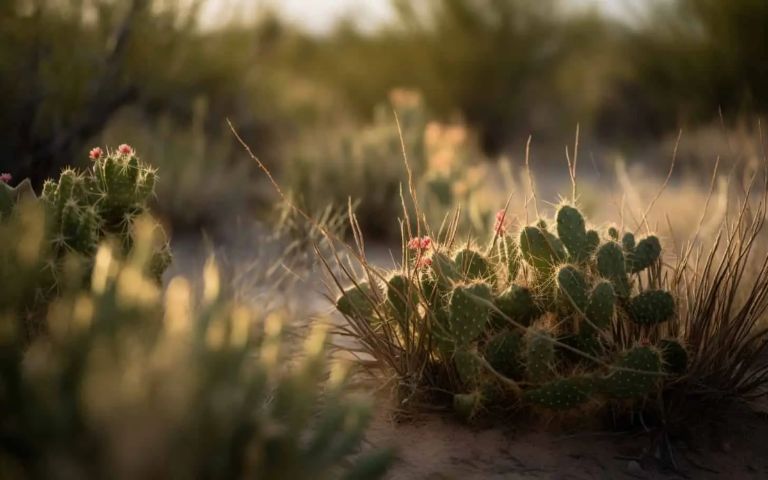
Vegetation plays a crucial role in desert survival, as it can indicate the presence of water sources.
Observing plant life types and density in a particular area can gain valuable insights into the local desert ecosystem. Desert plants have evolved specialized adaptations to survive harsh conditions, such as deep root systems that tap into underground water reserves. Certain plants, like cacti, also store water within their tissues to sustain themselves during dry spells.
Identifying these vegetation indicators can be vital for finding hidden water sources and increasing your chances of survival in the unforgiving desert environment.
2. Recognize riverbeds and low-lying areas.
Riverbeds and low-lying areas are vital for finding water in arid regions. By understanding desert climates, you can identify the ideal locations for water sources.
Dry riverbeds are important landmarks to look out for as they indicate the presence of water during rainy seasons. Low-lying areas often retain moisture for longer periods, making them potential reservoirs. Navigating sand dunes may seem challenging, but it can lead you toward water sources since underground aquifers often run beneath them. Be cautious of mirages, though, as they can be deceiving and lead you astray from actual water sources.
3. Use animal behavior and tracks.
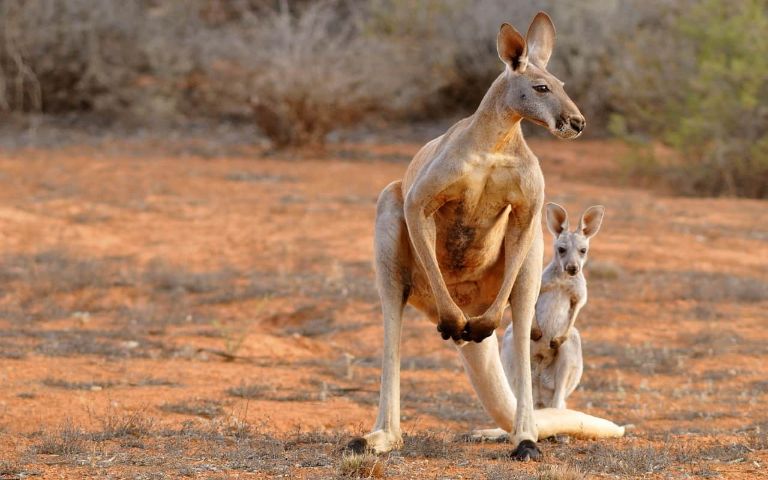
Animal behavior can provide clues about the presence of water sources nearby. Look for signs such as birds flying low or circling overhead, as they may indicate the water’s location.
Animals like insects, reptiles, and mammals are also attracted to areas with water, so keep an eye out for their movements and behaviors. Tracking techniques can help you identify footprints or droppings that might lead to a hidden oasis or watering hole. Additionally, animals often create paths toward water sources, so following these trails can guide your desert navigation.
4. Dig for moisture in shaded areas.
Moisture detection is crucial when searching for water in arid regions. Digging in shaded areas increases your chances of finding underground springs, which can provide much-needed hydration.
Look for signs such as damp soil or green vegetation that indicate the presence of water beneath the surface. Additionally, condensation traps can be constructed using plastic sheets to collect moisture overnight. Explore shaded caves and crevices where water may collect due to reduced evaporation rates.
5. Construct and use a solar still.
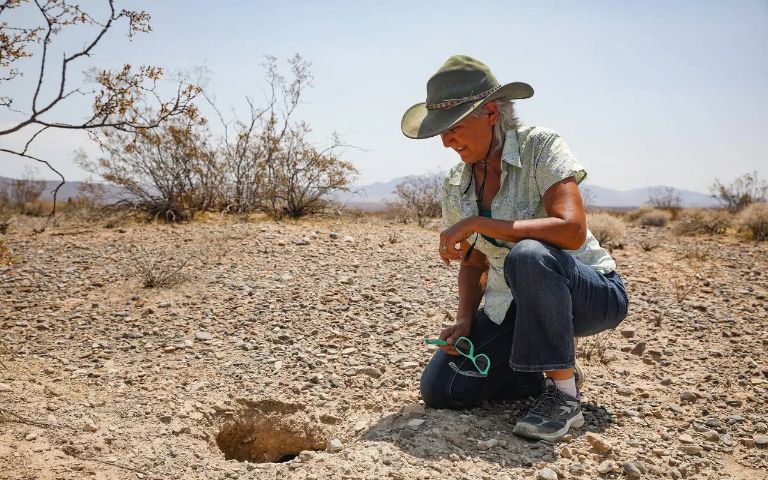
A solar still is a simple yet effective device that uses the sun’s power to collect and condense water vapor from the air.
To construct your own solar still, start digging a hole in the ground and placing a container in the center. Cover the hole with plastic wrap, ensuring it’s tightly sealed around the edges. As sunlight heats up the ground, water evaporates from soil and vegetation, condenses on the plastic wrap, and drips into the container. To maximize water yield, choose a location with high humidity and place rocks or foliage inside to create shade and increase evaporation.
Remember that solar stills have limitations, including low production rates and reliance on sunny conditions for optimal performance. Nonetheless, incorporating solar still into your survival strategy can provide you with a valuable source of clean drinking water in extreme environments.
6. Harvest rainwater.
Rainwater collection is a method that involves capturing and storing rainwater for later use. Various filtration methods are available to ensure the water is safe for consumption, including using filters or purifiers.
DIY rainwater harvesting systems can be set up using simple materials such as barrels or tanks to collect and store the rainwater. Rainwater is naturally soft and doesn’t contain chemicals like chlorine, making it ideal for watering plants or household use with proper treatment.
7. Utilize dew and cactus.
Dew and cacti can serve as potential water sources in the desert.
Dew is moisture that forms on surfaces during cooler nighttime temperatures. You can collect dew using absorbent materials such as cloths, bandanas, or grass to wipe or dab surfaces like leaves, rocks, or even the ground. Wringing out the collected moisture can give you a small amount of water. This method can be particularly effective in arid areas with high-temperature fluctuations.
On the other hand, certain types of cacti, such as the barrel cactus and prickly pear cactus, store water within their tissues. To access this water, carefully cut or puncture the cactus and extract the liquid. Be cautious when dealing with cacti, as some can have thorns or spines that can cause injury. Remember that consuming cactus water should be a last resort, as it might not be enough to sustain you for an extended period.
8. If all else fails, find high ground.
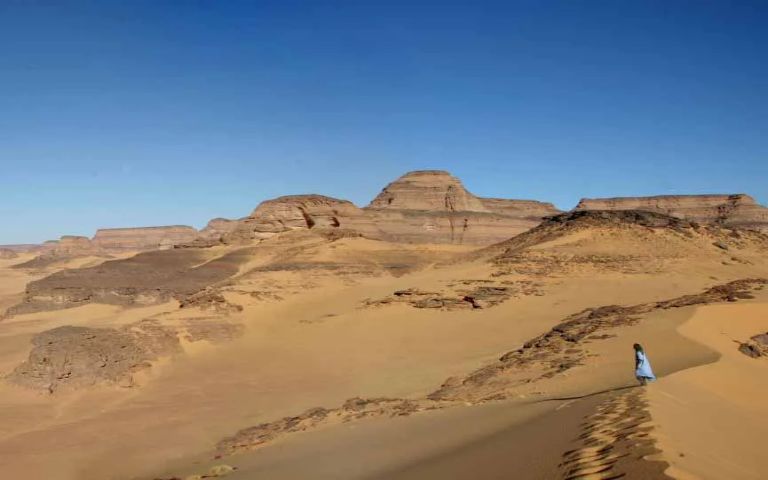
If all else fails, it’s time to consider finding high ground as an alternative source. In a desert environment, climbing higher elevations can increase your chances of locating water. As you ascend, watch for signs such as vegetation or animal tracks that may indicate the presence of water sources nearby.
Additionally, honing your navigation skills is crucial to determine the direction of potential water bodies like oases or streams. Remember to conserve your energy and use climbing tips such as taking small steps and using handholds carefully.
Staying Safe in the Desert
Once you’ve found a water source in the desert, taking specific precautions to ensure your safety and make the most of the situation is essential. Here are some steps to stay safe:
1. Water Purification: Even if the water source appears clean, purifying the water before drinking is essential. Use purification methods such as boiling, water purification tablets, or a portable water filter to eliminate potential contaminants and microorganisms.
2. Hydration: While rationing your water is crucial, do not withhold hydration. Consume water in small sips rather than gulping it down. This helps your body absorb and use the water more effectively.
3. Protect Water Source: Be mindful not to contaminate the water source. Avoid washing directly in the water, and keep any containers you use clean and free from debris.
4. Navigation: Mark the location of the water source on a map or using a GPS device. This helps you navigate back to the source if needed and prevents getting lost in the desert.
5. Shade and Rest: Rest and recover, especially if you were dehydrated or fatigued before finding water.
6. Signal for Help: Make yourself visible to potential rescuers if lost or distressed. Use reflective materials, signal mirrors, or brightly colored clothing to attract attention.
7. Collect Additional Water: Gather and store more water than you need immediately. Water sources in the desert can be unpredictable, and having extra water reserves can be a lifesaver.
8. Plan Ahead: Use the newfound water source as an opportunity to plan your next steps. Assess your situation, evaluate your supplies, and decide whether to stay put, continue moving, or signal for rescue.
Hunting Water in the Desert: Your Key to Survival
In conclusion, finding water in the desert is a crucial skill for survival. By preparing yourself with knowledge and necessary equipment, you increase your chances of locating potential water sources.
Remember to watch for signs such as vegetation, animal activity, and rock formations that may indicate water presence. Just like a skilled tracker following footprints in the sand, you, too, can navigate through the arid landscape and quench your thirst amidst the desert’s unforgiving heat. Adapt to your circumstances and stay hydrated!
